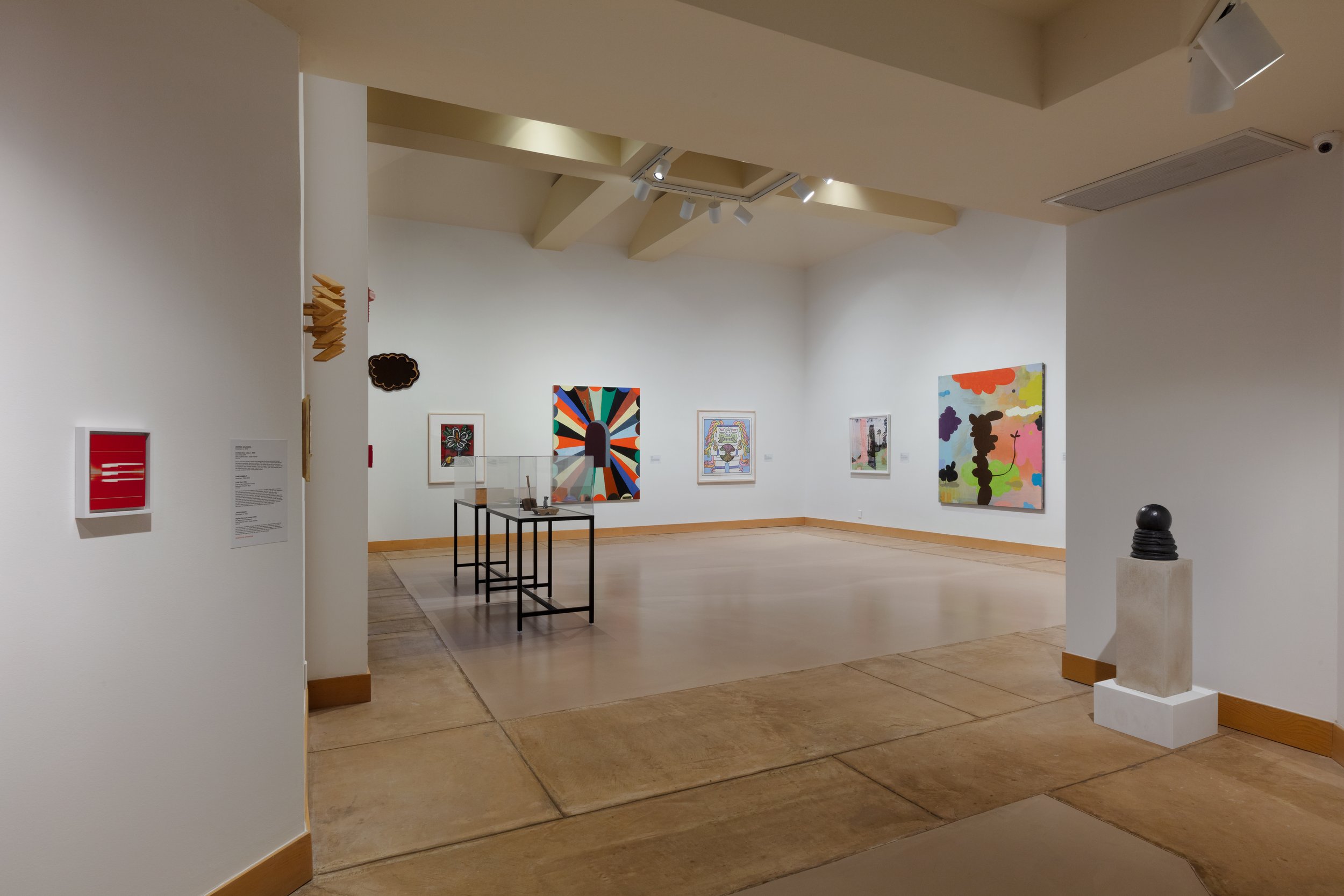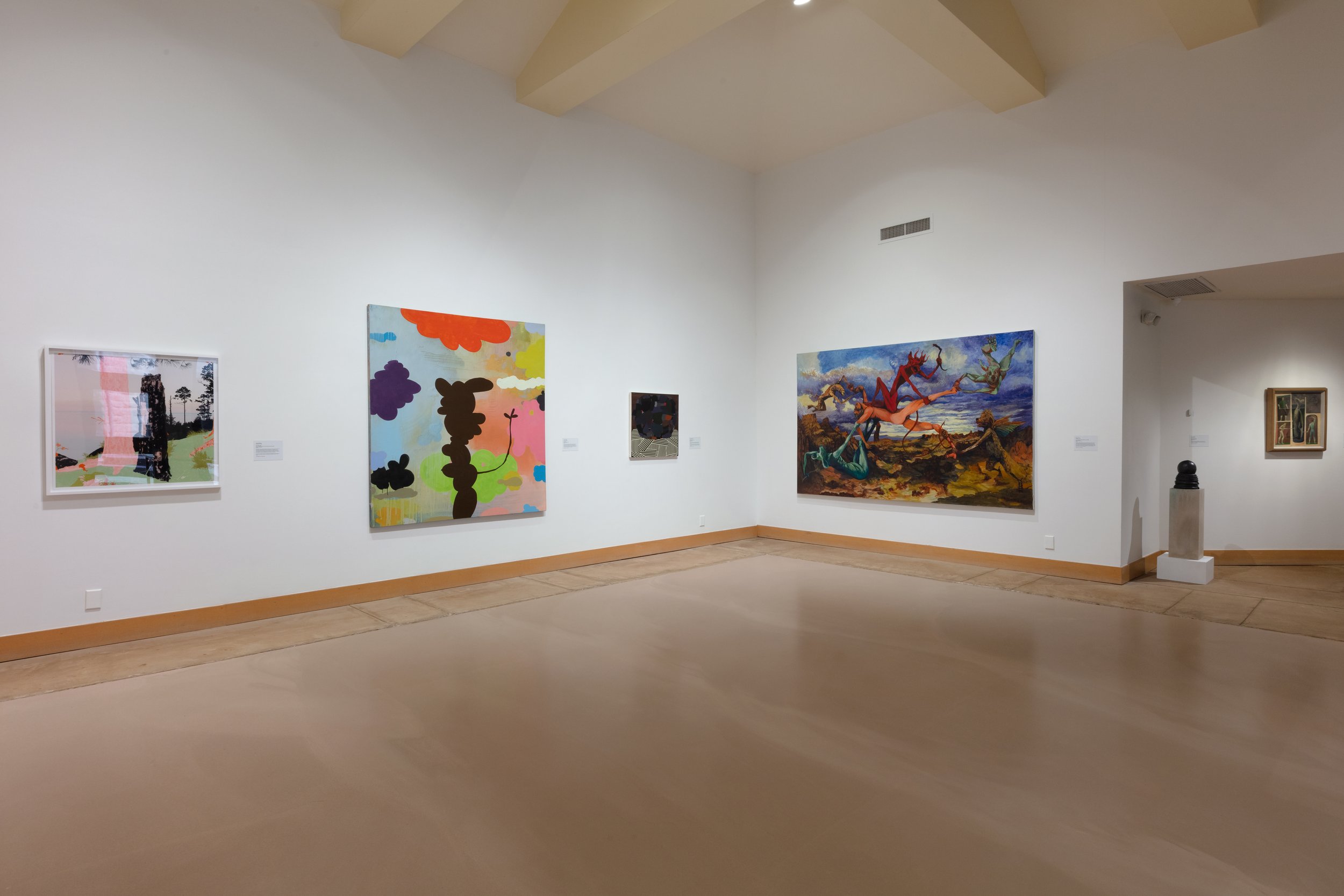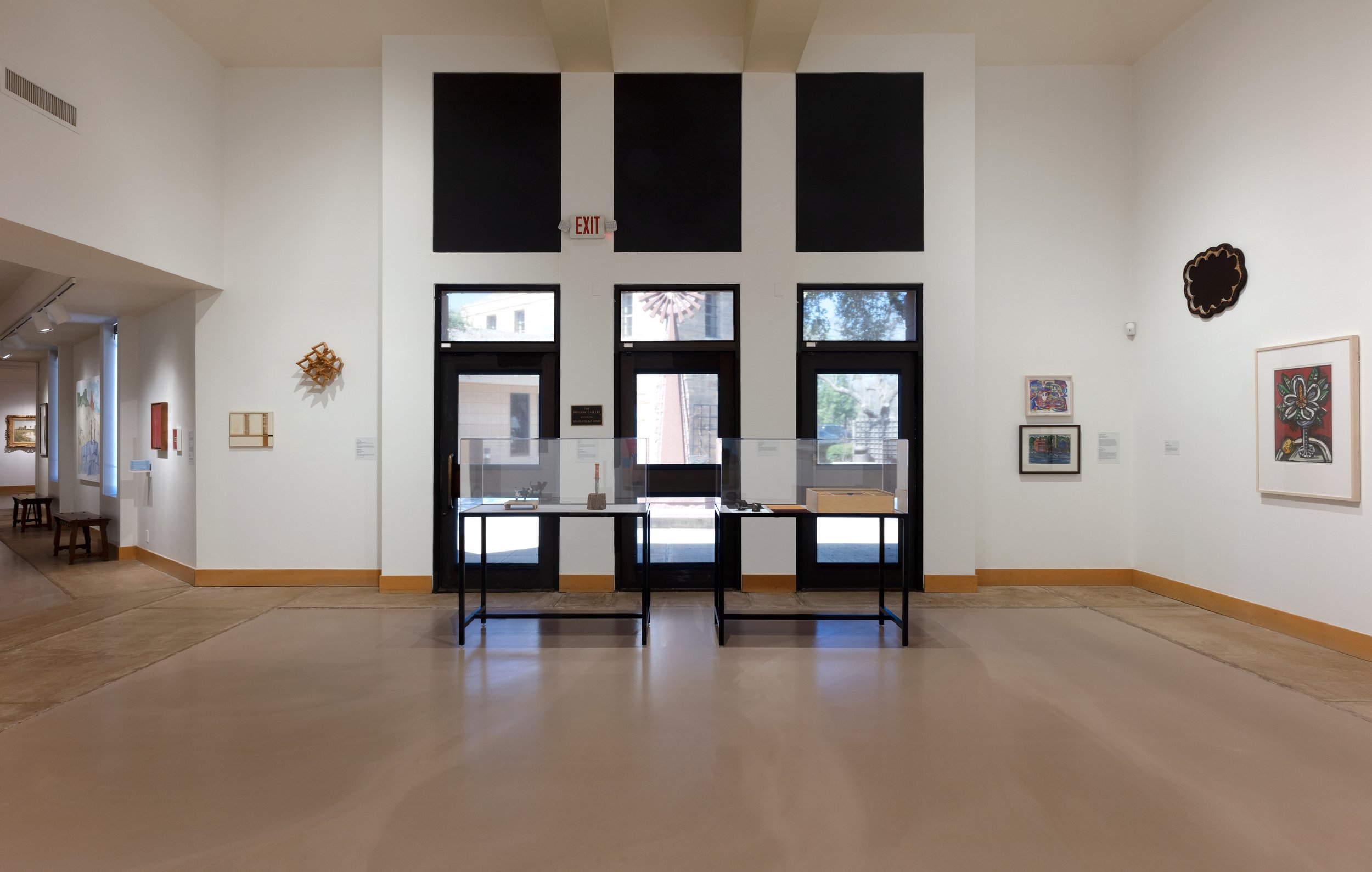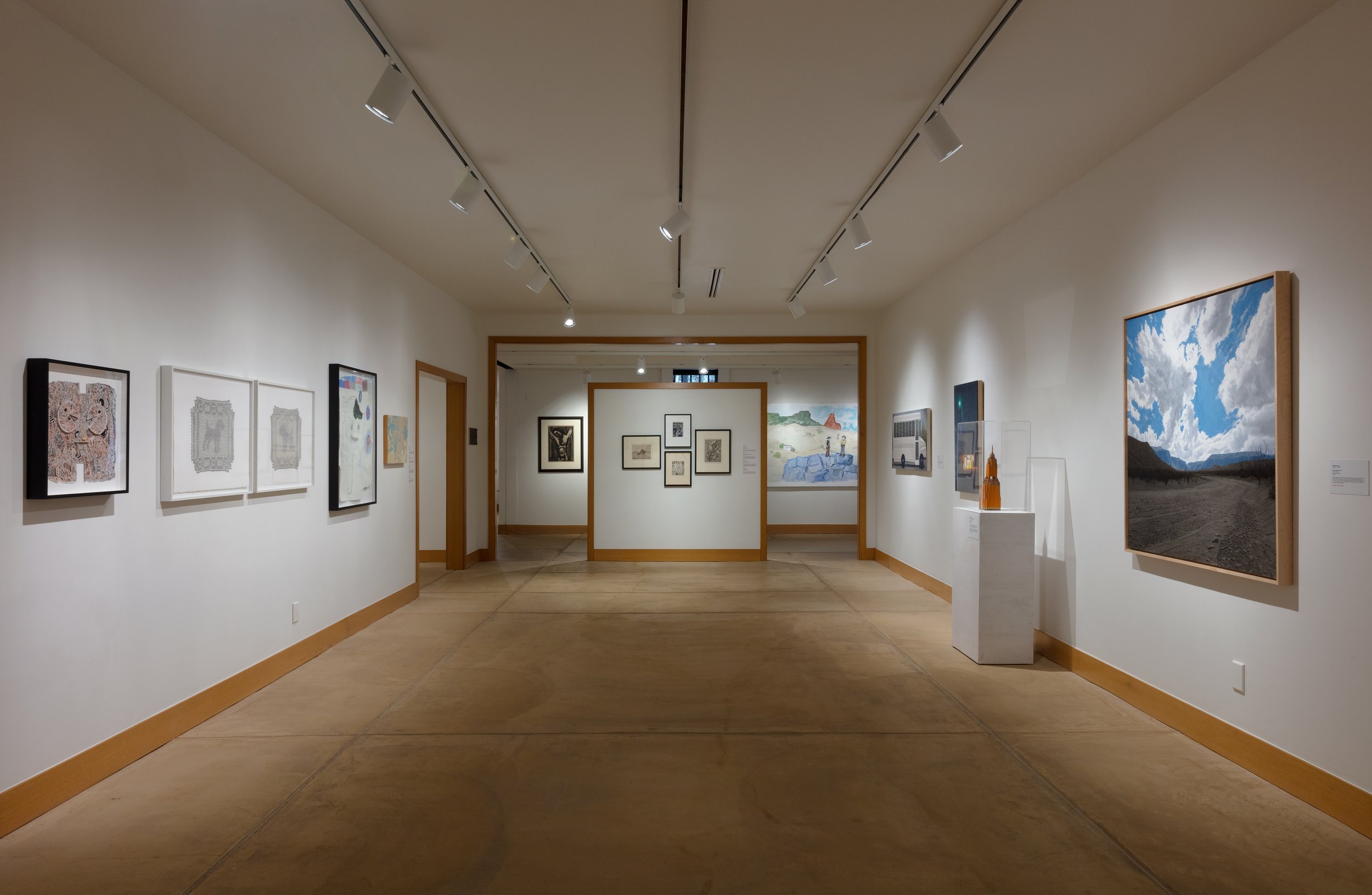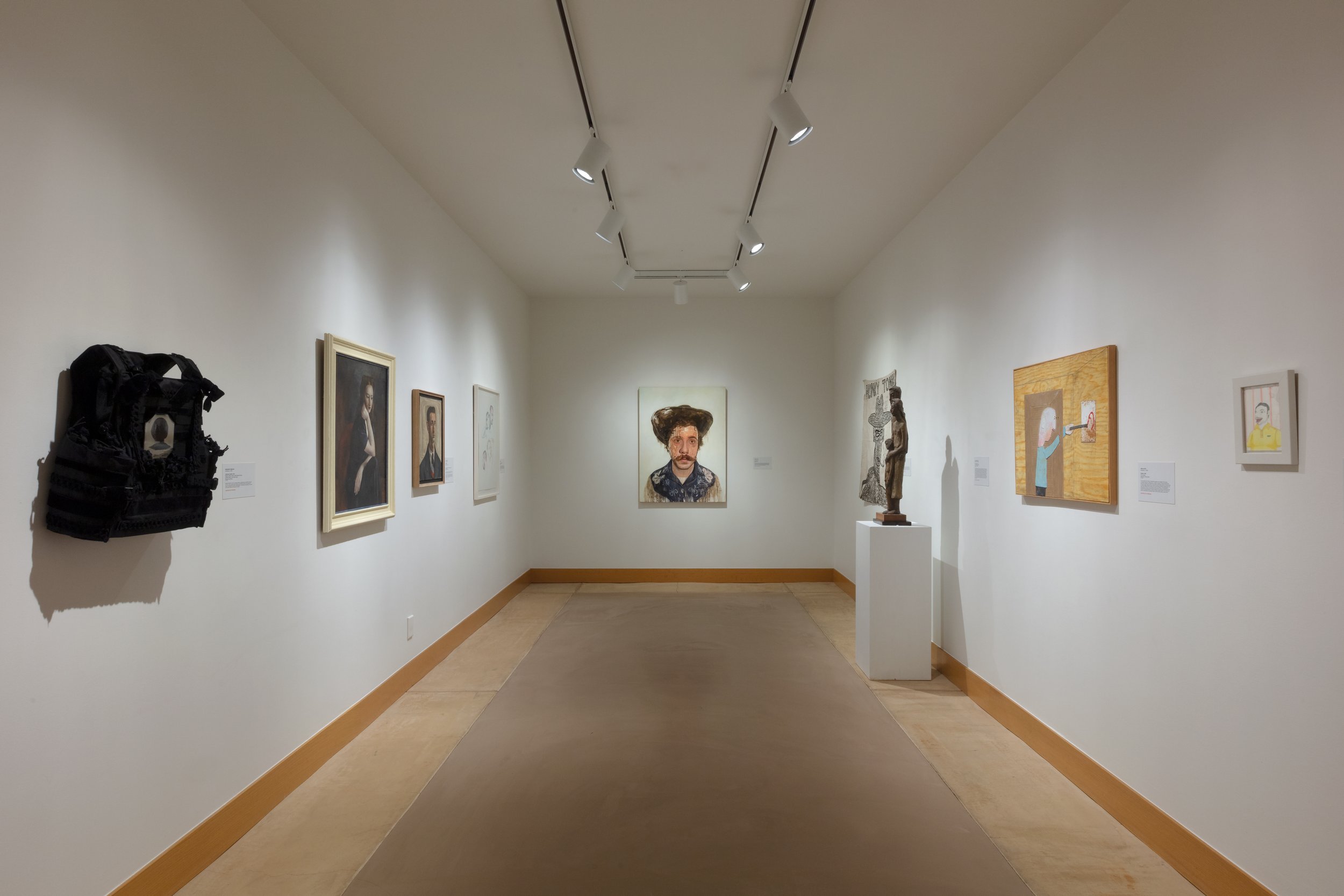Joshua Hagler’s Nihil II / Nor the Moon in its Water, is the second in an ongoing series of exhibitions informed by imagery inspired by the artist’s visual encounters while traveling in New Mexico as well as childhood memories related to the loss of a younger brother. For this Nihil iteration, Hagler duplicates his drawings and sculptures, and then presents the versions within the two cells of the OJAC’s jail structure. As a result, each becomes a shadow or reflection of the other. Hagler states that “one could think of the installation as two exhibitions—one as the deteriorating memory, or a dampened echo of the other.” He admits that any specific meaning in the work is of less importance than what is experienced during its making and also when it is viewed.
The 2024 Cell Series of exhibitions is generously supported by the National Endowment for the Arts, Paula & Parker Jameson and the McGinnis Family Fund of Communities Foundation of Texas with additional funding from Jay & Barbra Clack, Kathy Webster in memory of Charles H. Webster, and Dr. Larry Wolz.
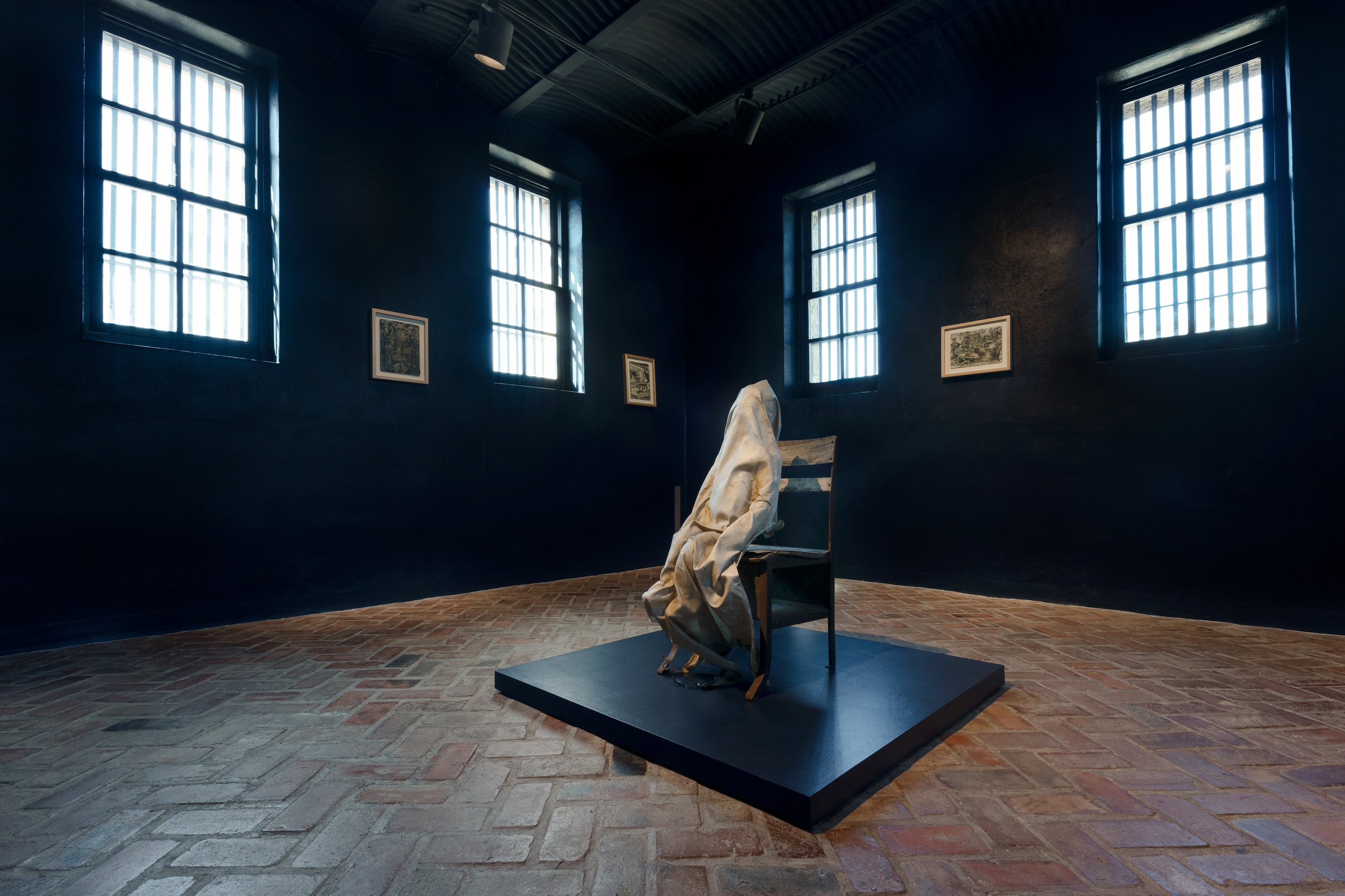
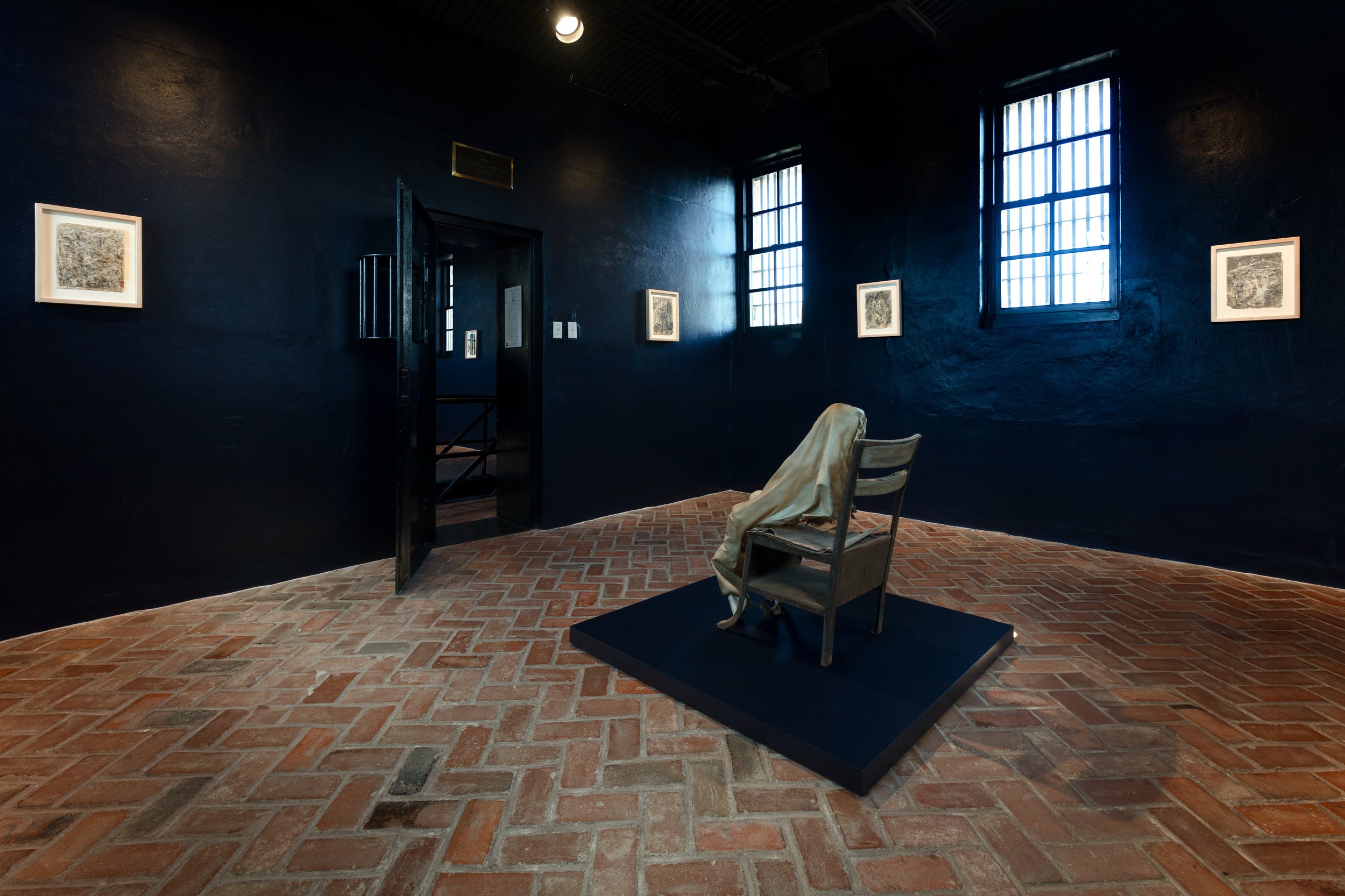
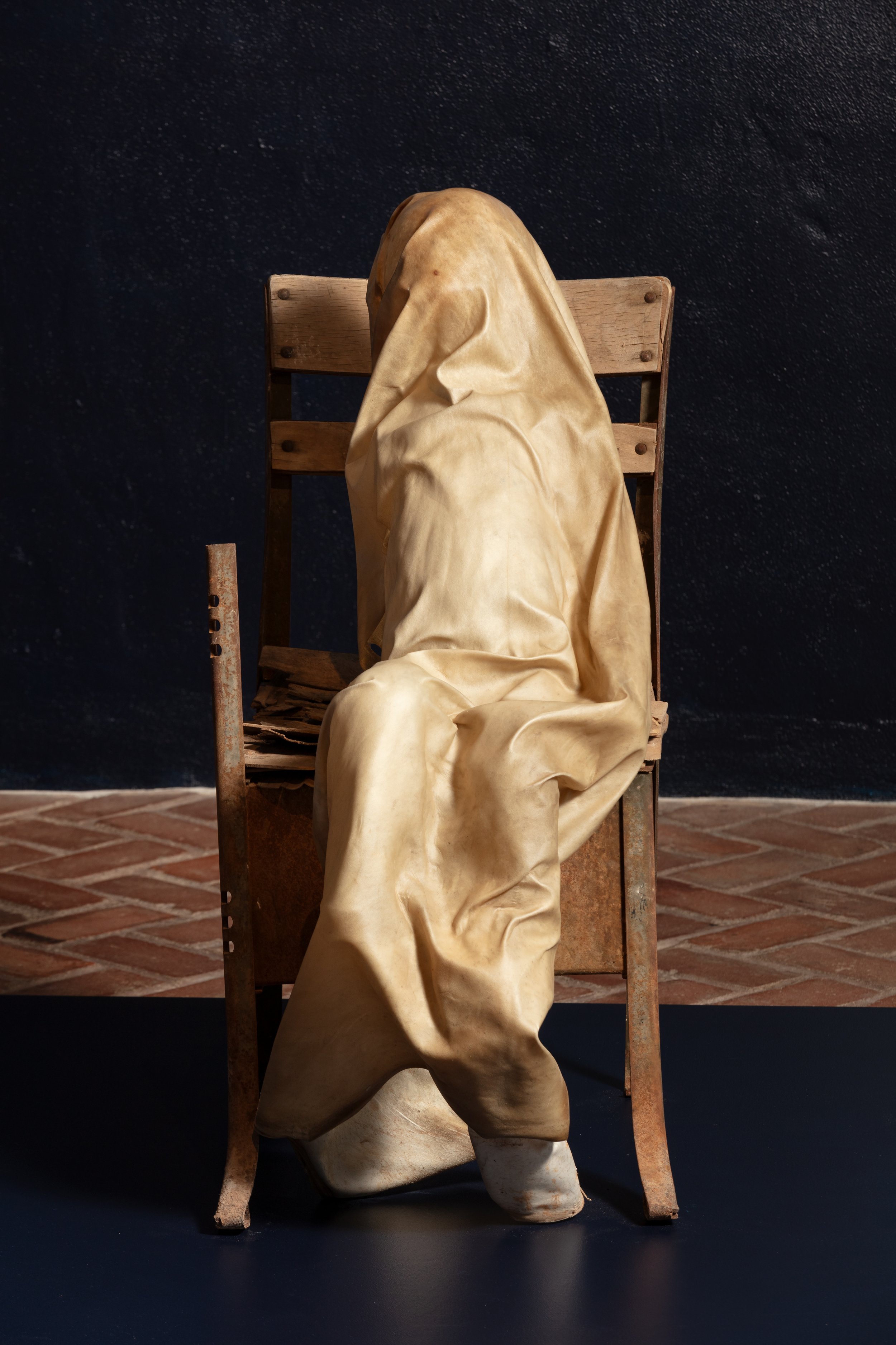


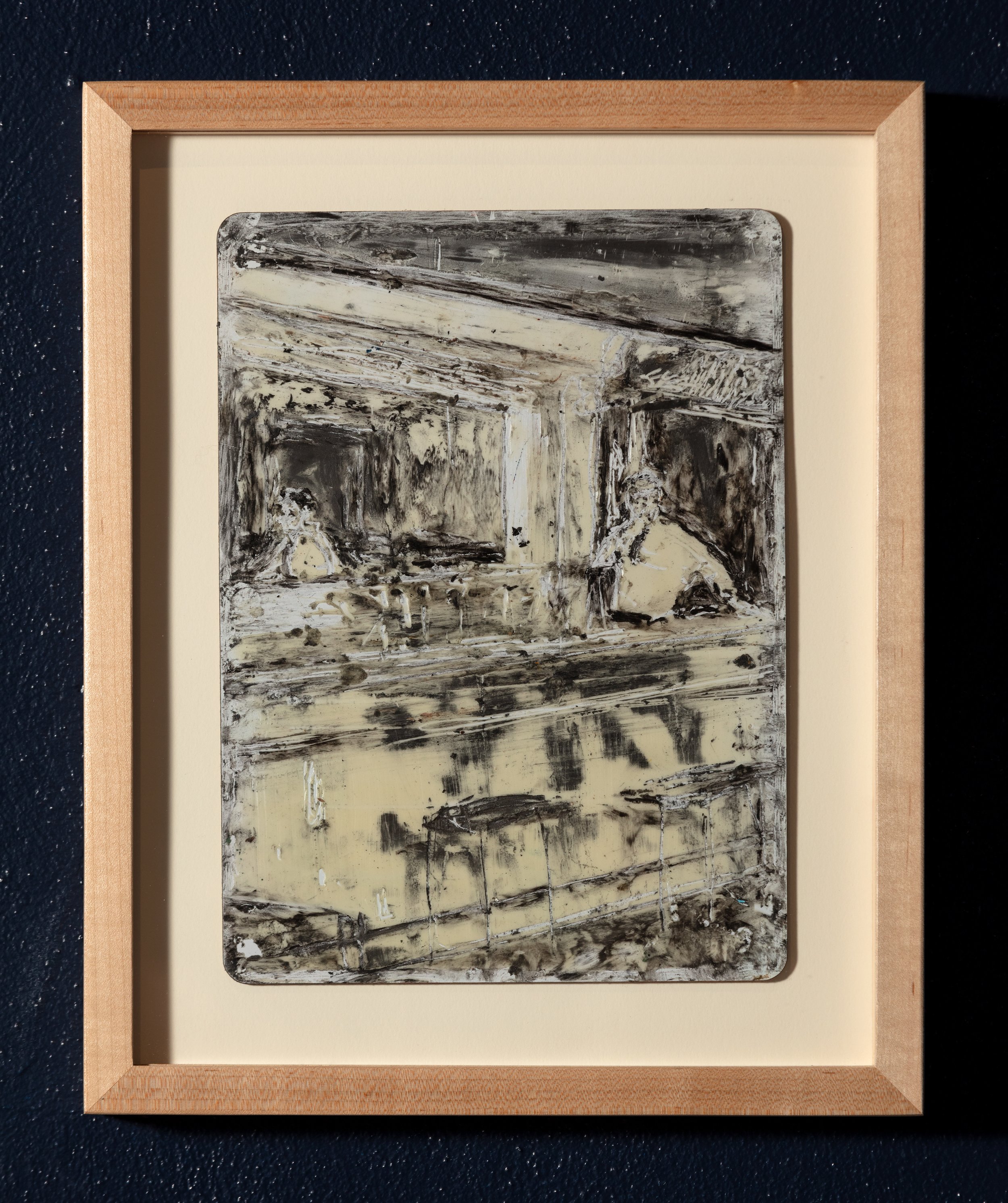
Photographs by Kevin Todora
Patrick Kelly, OJAC Director and Curator interview with Joshua Hagler
PK: I’ve recently been asking Cell Series artists about their youth (where they were born/raised, family, etc.) because it often informs their work. Do you mind sharing?
JH: I was born in 1979 at Mountain Home Air Force Base in Idaho. My mother was eighteen when I was born, my dad 21. My youngest brother died while we still lived in Idaho, something which I think is at the heart of the way I think about and make art to this day. To my perception as a six-year-old, he simply vanished.
Over the years, I’ve pieced together more and more about the circumstances of his death and the world of my parents. Because so much was kept secret, the life of my family was defined by these secrets. Projecting into this mystery was a daily part of my inner life as a child, though I didn’t understand it as such. I enjoyed drawing and telling stories, creating worlds which imagined him with secret powers flying around in Heaven and so on. When we moved from Idaho to rural Illinois, religious life became a focal point. The Christian groups I was a part of ranged from what I think of as ordinary American experiences to verging on religious cults.
I am a first-generation college grad, the first of the men in my family not to enlist in military service. In a way, my parents were so eager to see me receive a college education that they didn’t particularly care what I majored in. So, although they never really could understand what my interest in art was all about, they never interfered or deterred me from my interests. It was simply understood that we didn’t have the money for an out-of-state school, but otherwise I was free to choose. By then, we had moved to Arizona, so I went to the University of Arizona in Tucson where I earned a BFA in Visual Communications, which was kind of a combination of graphic design and illustration. My first time in an art museum was when I was hired as a weekend security guard at the campus museum. I don’t think I’d yet heard the phrase “contemporary art” before graduating. I used to say I rebelled against MFAs, but the truth was that I wasn’t much acquainted with the concept. I graduated from U of A wanting nothing more than to be a comic book writer and illustrator, and for a little while, I was.
PK: What happened to change the trajectory of your creative practice to “fine arts?” (I’m not a fan of that term.)
JH: Originally, my motivation for art making was to tell stories. I thought the comics and graphic novel medium was an ideal way to do that as it combined my two passions—drawing and writing. After a while, I realized that the stories I was passionate about telling, and the way I liked to tell them, meant no money and a tiny audience. I got the sense that if I really wanted to engage with more challenging questions and make things which are more deeply felt, I’d be better off in the “contemporary art” world.
Looking back, it occurs to me how naive I was, and how ironic this path has been. For years, I was embarrassed about my past as an illustrator and frustrated that my work continued to be seen that way. I really did come to believe that a distinction between “high” and “low” art was a meaningful one. I inherently believed that painting had the potential for a broader horizon, for deeper thought and feeling; and that it had something to do with the way in which the language of paint shifted and evolved over time in the work of the great painters. It seemed to me an entirely other logic, something closer to the significance of dreams, something closer to the soul. I had massively romantic ideas about what was possible in painting.
What’s clearer to me now is that there never was any real distinction in value between “commercial art” and “fine art.” What I mean is, within comics for example, one can make something worthy of being taken seriously, something which breaks from convention and embraces ambiguity, and do it well. I think most of us are happier being impressed by imagery that doesn’t stray too much from ideas we’re used to, especially if they can be done with just a little extra something—a flourish of color, or a spin on a motif. This is obvious in everything from music to film to literature. “Mediocrity is a strategy,” a certain Texas-based friend is fond of pointing out.
I know I have another graphic novel in me; I have had for years. As a young child, after the loss of my brother and the silence that ensued, I began verbally repeating everything I said in conversation. The first statement would be with my ordinary voice, and the second with a whisper. The story I began telling at 19 in my graphic novel The Boy Who Made Silence is the same story I’m telling now. There, is what I think I see, who I think I am, and a reiteration—a subjecting of that reality to a test, to find out if I am still in the world, or whether, like my brother, I've vanished from it.
PK: As a fellow visual artist, I agree with you on many of your points. But, let’s zoom in on the story you’re trying to tell now, specifically with your proposed installation in the OJAC’s Cell Series. Is the story a continuation, new, re-examination, etc?
JH: The work I’m putting together for the Cell Series comprises the second iteration of my ongoing cycle of Nihil exhibitions. Nihil is the name I’ve given to having nothing left to say. This might sound, from a certain distance, like loss or failure. In practice, saying nothing is the work’s liberation, its best hope for authenticity. It’s fair to think of Nihil alternately as a project, a methodology, a series of exhibitions, or an overarching contemplative practice, of which painting and art-making is one part.
This second iteration, titled Nor the Moon in its Water, is comprised of two sculptural objects and several drawings. Like all the Nihil work, the imagery arises from direct encounters I’ve had along the Nihil route—my tree-shaped map overlaid on the state of New Mexico where I live, which determines where I go and what I see. There is no underlying narrative or symbolic meaning consciously intended. Whatever happens, happens. I make sketches as a way of documenting what I find. Each drawing contains a story specific to it, unforeseen up to that point.
What’s specific to this installation is that I’ve duplicated the sculptures and drawings. When presented within the two cells, they become shadows or reflections of themselves. For example, a drawing I made on a student’s whiteboard found in an abandoned school is then redrawn on a Baptist workbook page found in an abandoned bible school. One substrate reacts to the drawing media differently from the next, and so changes the drawing all by itself. You could think of Nor the Moon in its Water as two exhibitions—one as the deteriorating memory, or dampened echo of the other.
The two sculptures are made of found student desk chairs and deer hide in the shape and size of a three-year-old child. From the birth of my daughter, who is now three, until now, my late brother has aged with her in my mind’s eye, so that they are always the same age. This began happening automatically in waking visions and dreams.
Perhaps the most potent aspect of the Nihil experiment is that it reveals the profane demarcation between internal and external life. The external is made internal, and vice versa. I don’t think, anymore, of telling stories, but of integrating experiences into the “making.” What the work is about has become less important to me than what the work simply does. What it does when I make it, and what it does when the viewer encounters it.
A moon in water is a reflection of a moon. We assume the moon is real and its reflection false. But from an observational perspective, each is round. Each emits light. One is still, the other fluctuates. It’s the fluctuation that implies the observer, the image prompting the eye, the eye prompting the image. Perhaps reality, as such, co-emerges with the self. I might think of the art I make, then, as a confirmation of that co-emergence, an affirmation of the mind recognizing itself in the world, as the world.






